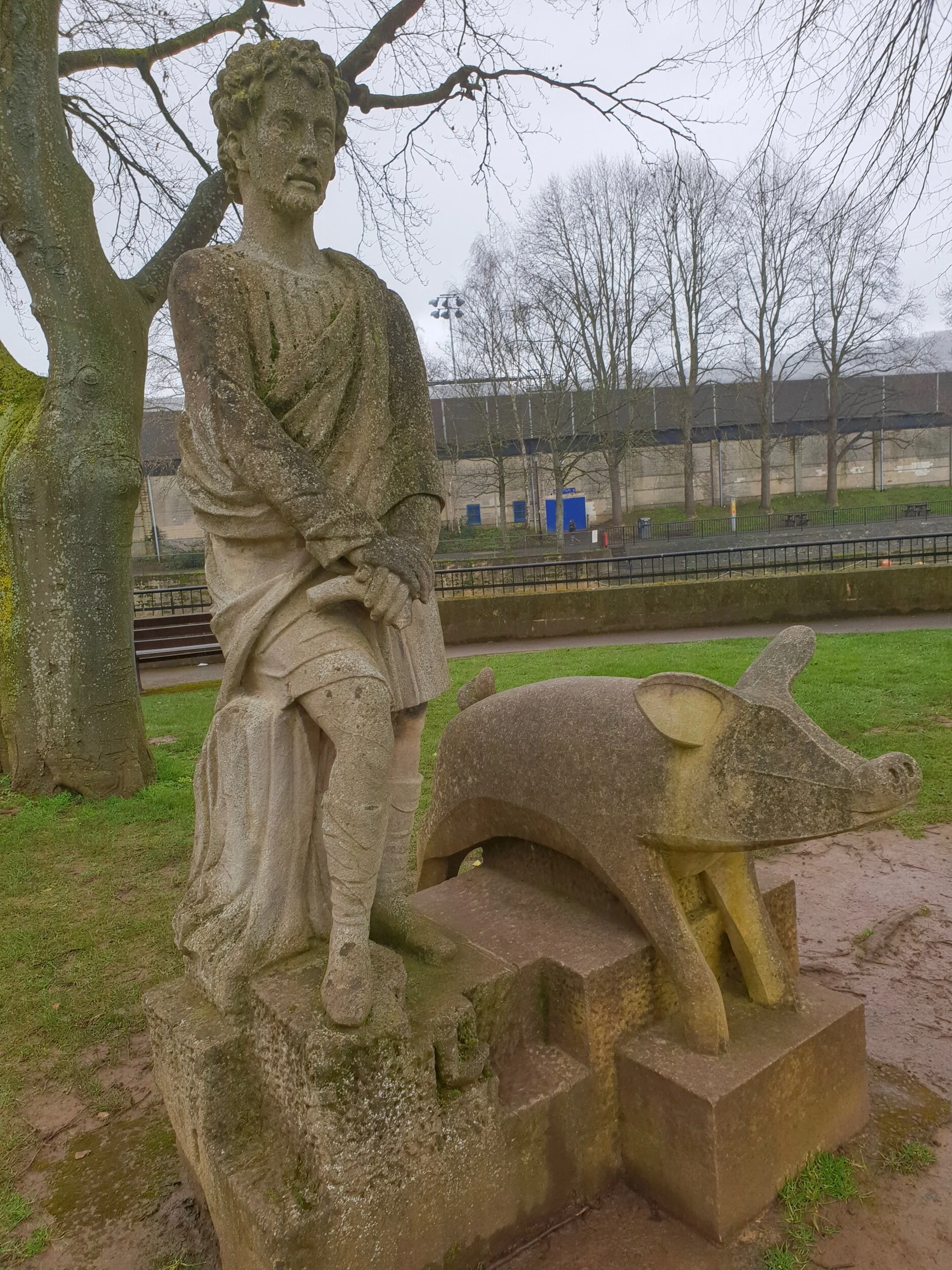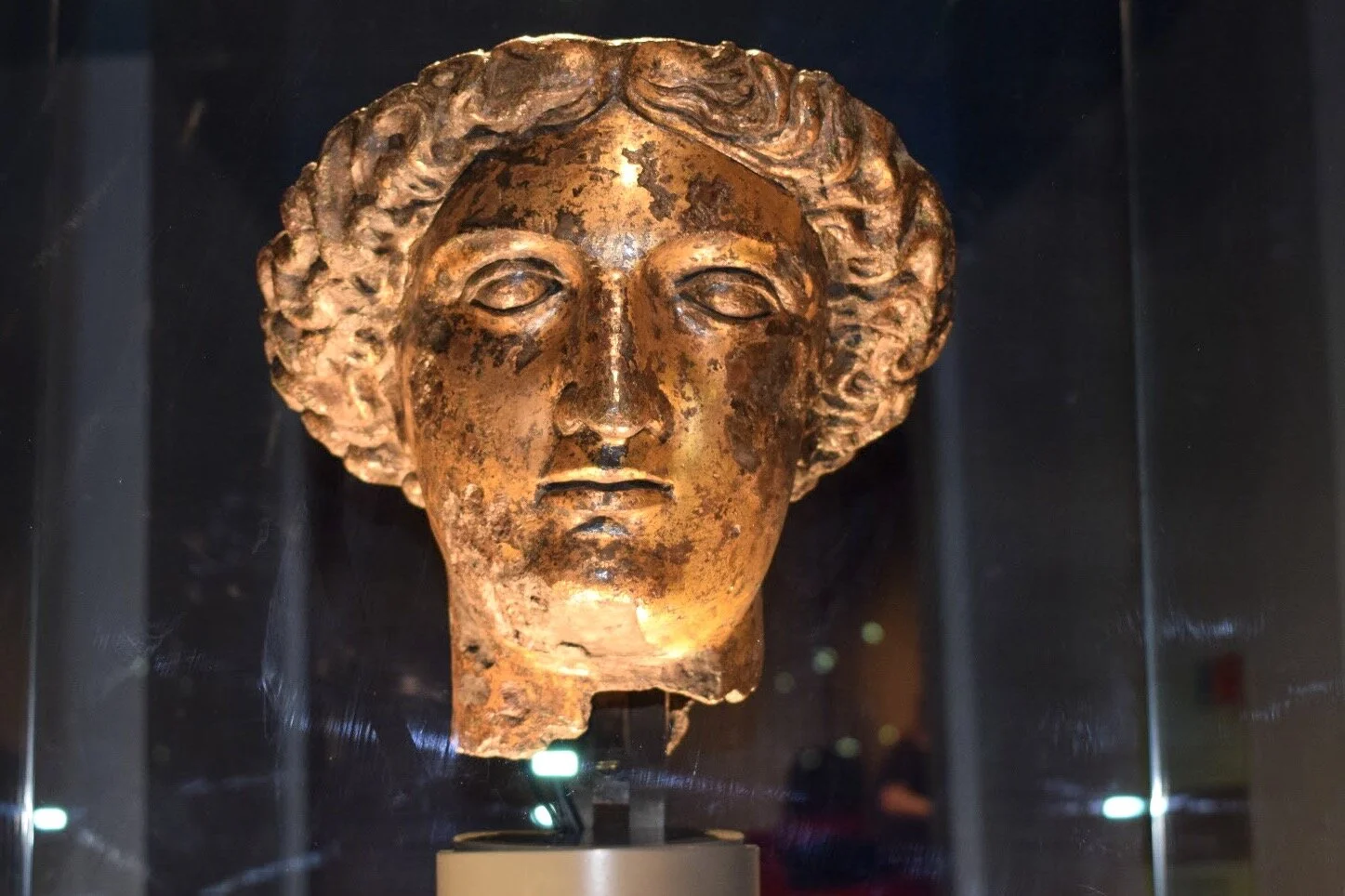King Bladud
After months of reading both fiction and non-fiction it became clear that there were two basic problems when it came to researching the historical facts behind the presence of Sulis Minerva in Bath. One was where to start and the other was that we were storytellers, not archeologists or a Celtic or Roman historians. But it had become clear that many of the writers telling the story of Aquae Sulis were not either.
King Bladud was the legendary founder of the city of Bath and of the Temple of Sulis Minerva at Aquae Sulis, so we decided to look at his story first.
Although there is a statue of King Bladud in the Baths, there is no factual historical evidence of his existence. The first mention of him is in Geoffrey of Monmouth’s Historia Regum Britanniae (written around 1136), which describes him as the son of King Rud Hud Hudibras, and the tenth ruler in line from the first King, Brutus. Geoffrey’s main source seems to have been a ‘very ancient book written in the British language’, given to him by his friend Walter, archdeacon of Oxford which he allegedly translated into Latin. This book traces the royal line from Brutus of Troy, the imaginary founder of Britain, through a host of supposed pre-Roman sovereigns to Cadwallader, a genuine king of Gwynedd who died in 664 AD. However, there is no evidence that this book ever actually existed.
It is possible that it could have been a manuscript book similar to one now in the British Library, which contains the work of Nennius (c800AD) as it was from Nennius that Geoffrey took the legend of Brutus and the ‘evidence’ of the Welsh Chronicles, which mention King Arthur and Welsh genealogies traced back into the late Roman period. In fact, Geoffrey seems to have drawn on many sources, including Classical writers, and changed and edited things. He took his description of the Baths and the Temple of Minerva at Aqua Sulis from a 3rd century travel book and claimed that Bladud had built it all. He also took the Greek myth of Daedalus and Icarus and adapted that to Bladud.
Geoffrey was nostalgic for a golden Celtic past. His hero was Arthur, a legendary king who fought back against the Romans. So it seems that the book he wrote was probably a mixture of history, legend and invention and it’s difficult to untangle the reality from the fantasy.
Due to the excavations there is more factual evidence today than there was in Geoffrey’s time but what we were trying to untangle was the history behind the sighting of a Goddess: which in itself is a mystery, something difficult to back up with hard historical fact. So, in order to discover a more ‘esoteric’ magical significance of the site we felt it was valid to do more as Geoffrey did and look at a mixture of myth and legend and fact and fiction and to talk to people, who even today still believe in the magical powers of the Goddess.
The Celtic tradition was an oral one. History was passed on through storytelling. And it seems possible that the story of King Bladud was a mythical Celtic story.
The story goes that when Bladud was a young man he was sent by his father to be educated in the liberal arts in Athens. There he contracted leprosy. On his return home, in order to avoid being locked up by his father he ran away and took a job as a swineherd. He noticed that the pigs would bathe their scabby skins in a muddy swamp and this healed them. Bladed decided to try this himself. The cure worked and he was able to return to Court. When he became king he dedicated the Baths and Temple in memory of his miraculous cure.
Bob Stewart (R.J.), in his book The Waters of the Gap, written in 1981 when he was living in Bath and looking at the more esoteric history behind the Baths, says that this story is a typical myth. Bladud is a diseased prince who cannot rule because he is imperfect. The only cure is from the Other World. He says ‘The theme is that of the renewal of the sun in winter and the magic of death and renewed life…The sun was renewed in the magical cauldron of the Other World and Bladud was cured in the swamp where the hot spring rises.’
So it does sound likely that this was a mythical Celtic story and the beginning of the magical story of the spring, as an entrance to the Other World of the Celts and a place of healing and magic.
It is not the only story that connects Bladud with magic. Geoffrey doesn’t mention the story of the pigs but he does say that ‘Baldudus (Bladud) reigned for twenty years and built the city of Kaerbadus, now called Bath. In it he built warm baths for the curing of diseases. He made Minerva patron of the baths, and in her Temple placed inexhaustible fires – these never burned down to ashes, but as soon as they began to fail, were turned into balls of stone…..[He] taught necromancy throughout Britain, continually doing many wonderful things and finally making himself wings to fly through the upper air. But he fell onto the temple of Appollo in Ternova (London), his body being broken into many pieces.’
To Bob Stewart it seems that Bladud’s story was turning into that of a sun-king or god, working magic, flying through the air and linked to both classical and native roots. He goes on to quote from Bale’s Chronicle of 1548 which expands the story further by saying that King Bladud was said to have written several books about mathematical magic and ‘According to Virunnius, he used, like a second Proteus to assume various shapes and to disturb the elements with strange quakings from the earth’ The Chronicles say of Bladud that he practised and taught the following arts or sciences: Astronomy/Astrology, Necromancy, Fire Magic, Shape Changing, Therapy and Flying through the air by magical means. Bob Stewart points out that ‘These are all typical of the practices of the pagan priesthoods and mythical heroes. Bladud’s magic is exactly that of the Druids, as shown in the Irish and Welsh sources and classical descriptions. He is priest king in a typical Celtic or British manner.’
Looking at this mixture of myth and legend, of fact and fantasy and the way in which various writers have interpreted the stories. It seemed that one thing was sure. Wherever we start this story, of Aquae Sulis, the springs and waters of Bath have always been a place of mystery and magic, of healing and rebirth, and a place where it is possible to contact the Other World.
King (or perhaps Prince) Bladud.



